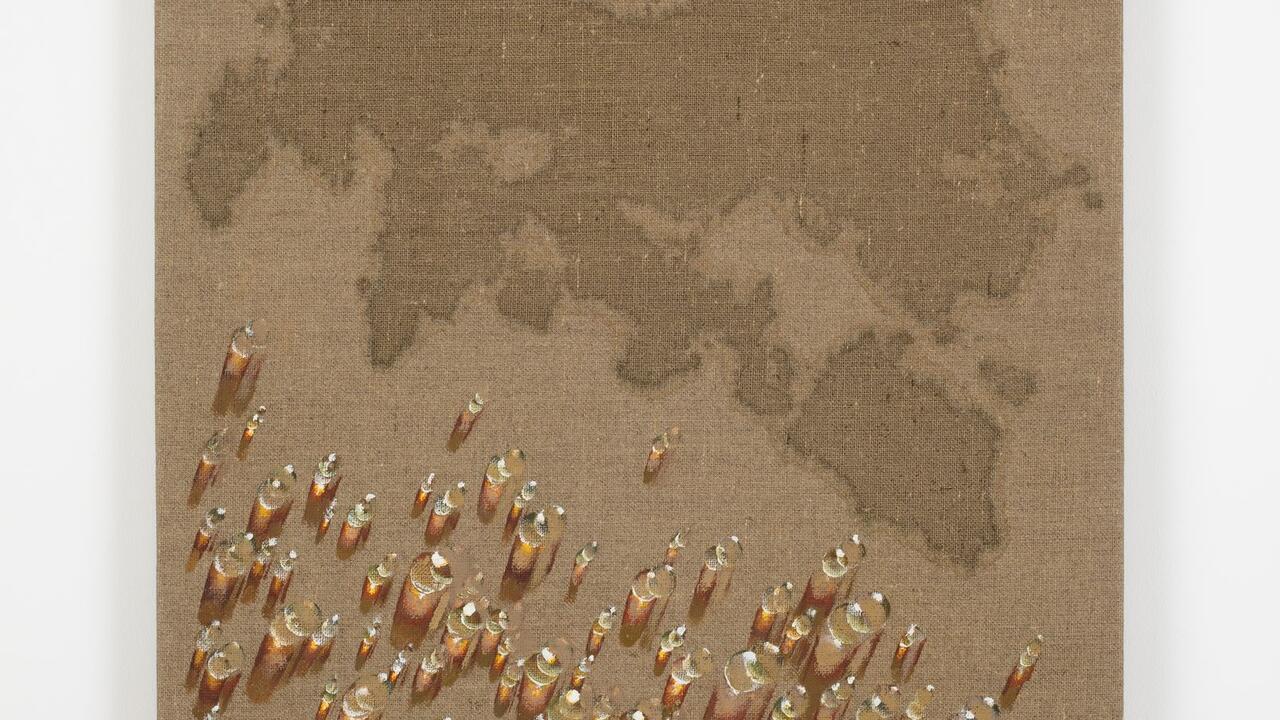Roy DeCarava and the Sonic Power of Photography
Two shows at David Zwirner, New York, champion the artist's ability to capture the sound of a now-bygone world
Two shows at David Zwirner, New York, champion the artist's ability to capture the sound of a now-bygone world

A new exhibition of Roy DeCarava’s photographs at David Zwirner in New York is an astonishing document of American life in the second half of the 20th century. DeCarava’s pictures of the scuffed modernist geometries of Manhattan streets and the faces of an American demimonde of singers, musicians and painters, anonymous passers-by, freedom marchers, men and women at diners or in banks or at the park, form an irresistible, mesmerizing portrait of a city and a country of mad contradiction and beauty. As an exhibition, I could hope only that it might never be taken down from its walls and, in its endlessness, serve as both totem and tomb.
Jimmy Scott singing (1956) brings the vocalist’s interlocking hands into sharp focus, while his head remains a blur in the background, the faded shape of his brow suggestive of both the pleasures and sorrows intoned by jazz. I can hear in that photograph – across the years that separate me from the moment it was shot, across the medium’s requisite silence – Scott’s high warbling contralto voice, which sang at President Eisenhower’s 1953 inauguration ‘Why Was I Born?’ (1929). To put it simply: wow.

It is difficult not to love the world of these photographs, even if it was – and remains – a world, an America, so violently hostile to the black men, women and children who are DeCarava’s predominant subject. Plain, pretty and powerfully wrought of shadow and light, this is a world in which glamour and poverty co-exist uneasily, not quite in protest against one another (though, certainly, they do protest one another) so much as in a continuously unsettled balancing act: New York’s, America’s, seemingly permanent rough state.
But, importantly, these photographs are imbued with intense personality and individuality, eschewing explicit social commentary without foregoing politics. A young boy sits with his chin resting on his palm in a rubble-strewn lot in 1951; in a photograph dated a year later, the burlesque performer Gypsy Rose Lee steps out of a shimmering limo, perhaps to a club engagement ahead of her star turn in Babes in Bagdad (1952). In Graduation (1949), a woman in a bright white, floor-length dress crosses a sidewalk, the street beside her littered with rubbish; behind, a Chevrolet billboard advertises its ‘All-Star Line’. White men, their faces hardly visible, walk with confidence in shadow in 1961. A man sleeps on a stack of soda bottles in Pepsi (1964). In one 1975 image, someone in a hooded cloak stands beside a model for the ‘Little Boy’ atomic bomb. (In that last picture, DeCavara’s subjects’ occasional tendency to appear on the point of combustion finds its bleak correlative.)

In 1963, DeCavara went to the US capital to shoot the March on Washington for Jobs and Freedom. In Mississippi Freedom Marcher, Washington, D.C. (1963), a woman looks ahead, past DeCavara’s camera, with solemn purpose. Someone is speaking. And she is listening, just as DeCarava seems to do. These are photographs that hear their subjects as much as see them. An impossible task for a picture, of course, but one which this photographer, with his love of the hands and lips and eyes of musicians, seems to take up all the same. The moving synesthetic pleasures are abundant in the artist’s attention to jangling detail: the wind rustles a woman’s hair; a flame flickers in a glass lamp; pigeons coo next to a sleeping man; a train rumbles down its track; Edna Smith’s hand scales her bass; a lonely reader turns the pages of a book. Especially the musicians, shot across DeCavara’s long career, seem to understand the sonic possibilities of an image – that the only way to see the world is to listen to it. Now, go hear it again.
Roy DeCarava, ‘Light Break’ and ‘the sound i saw’ continue at David Zwirner, New York (W 19th St and E 69th St locations, respectively), USA, through 26 October 2019.
Main image: Roy DeCarava, Couple and lady, Bryant Park, 1963, photograph. Courtesy: © 2019 Estate of Roy DeCarava, all rights reserved, and David Zwirner
























